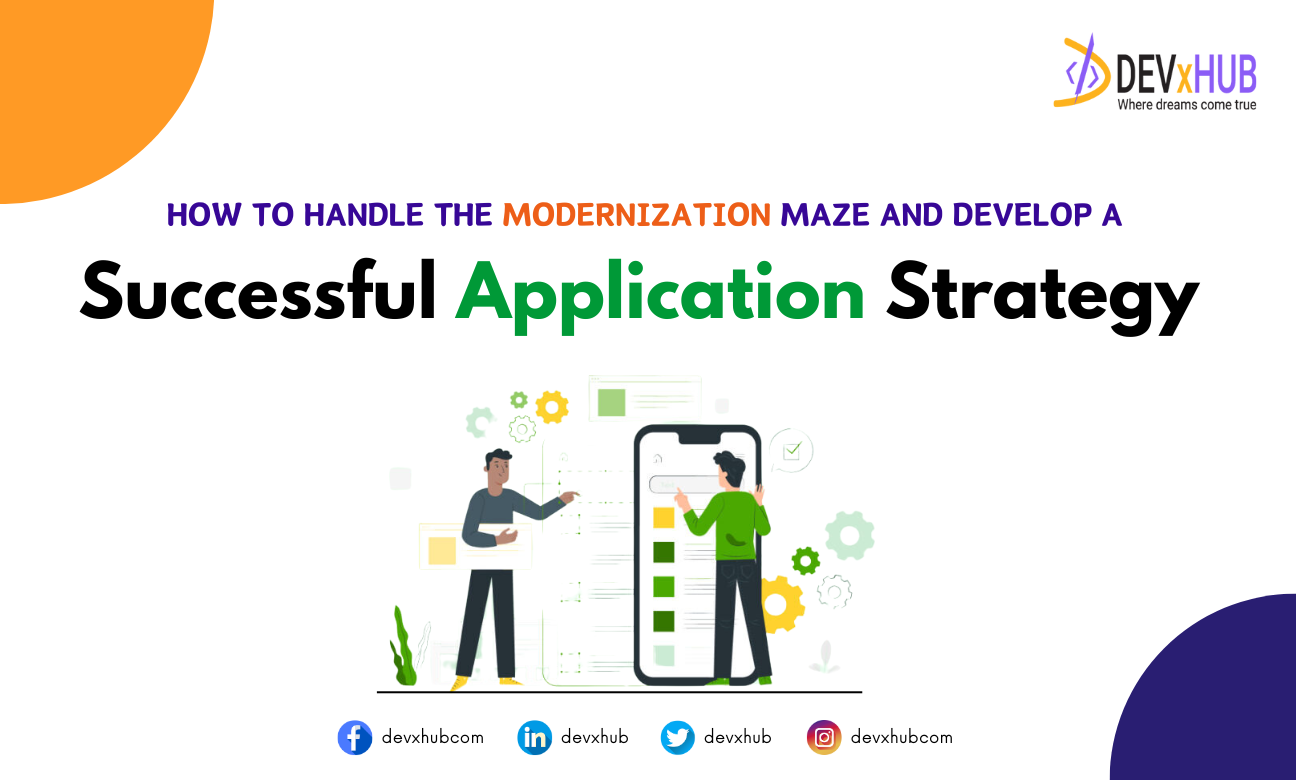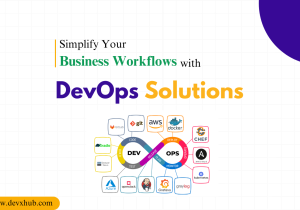Blog - How to Handle the Modernization Maze and Develop a Successful Application Strategy
In the swiftly changing digital realm of today, the revitalization of applications has emerged as a pivotal necessity for businesses aiming to retain competitiveness and fulfill the escalating expectations of their clientele.
Yet, crafting a potent strategy for application modernization often resembles traversing a labyrinth, replete with myriad challenges and factors demanding attention.
This piece aims to serve as your guide through this maze, furnishing practical insights and invaluable advice to aid in the formulation of a resilient application modernization strategy that fosters triumph.
The Importance of Application Modernization
Outdated applications can impede business agility and innovation, as evidenced by 90 percent of businesses grappling with legacy systems. These systems often lack scalability, hamper user experience, and incur high maintenance costs, contributing to resource drain.
Moreover, inefficient systems lead to a significant loss of productivity, with 48 percent of UK employees squandering at least three hours daily.
Embracing application modernization unlocks a host of benefits, including improved scalability, enhanced user experience, cost efficiencies, and the opportunity to harness modern technologies for staying ahead of the curve.
Assessing Your Application Portfolio
The initial step in formulating a successful application modernization strategy involves assessing your current portfolio.
Conduct a thorough inventory to identify applications driving the most value and those burdened by technical debt. This assessment aids in prioritizing modernization efforts and determining the optimal path for each application.
Defining Your Application Modernization Strategy
Clear objectives and goals are crucial for guiding your modernization journey. Define what you aim to accomplish – whether it’s enhancing performance, cutting costs, or elevating user satisfaction. A well-articulated strategy facilitates alignment of efforts, secures stakeholder buy-in, and enables effective progress tracking.
Understanding the Need for Modernization
Before diving into the how, it’s crucial to understand the why. Application modernization is not just about upgrading systems or adopting new technologies; it’s about enhancing business agility, improving user experiences, and optimizing operational efficiencies. Modernization can help organizations:
- Reduce Costs: Older applications often require more resources to maintain and support.
- Improve Agility: Modern applications can adapt more quickly to market changes and business needs.
- Enhance Security: Newer technologies provide better security features to protect against evolving threats.
- Increase Competitive Advantage: Leveraging modern technologies can provide unique capabilities that set you apart from competitors.
Assessing Your Current Landscape
The first step in navigating the modernization maze is to thoroughly assess your current application portfolio. This involves:
- Cataloging Existing Applications: Understand what you have, who uses it, and why it’s important.
- Determining Business Value: Identify which applications are critical to your business operations and which could potentially be phased out.
- Evaluating Technical Debt: Recognize which applications are outdated and are costing you more to maintain than they are worth.
- Assessing Performance Metrics: Look at the efficiency, scalability, and responsiveness of your current applications.
Setting Clear Modernization Goals
Once you have a clear picture of your current landscape, set specific, measurable, achievable, relevant, and time-bound (SMART) goals for what you want to achieve through modernization. Your goals could include:
- Enhancing User Experience: Improving the interface and usability of applications to boost customer satisfaction.
- Increasing Operational Efficiency: Streamlining processes to reduce time and cost.
- Expanding Market Reach: Integrating features that cater to new demographics or geographies.
- Complying with Regulations: Ensuring that your applications meet current and upcoming regulatory standards.
Choosing the Right Modernization Strategy
There are several strategies to consider when modernizing applications, each with its own benefits and challenges:
- Rehosting: Moving applications to a new physical, virtual, or cloud infrastructure without modifying the code.
- Refactoring: Restructuring and optimizing existing code without changing its external behavior to fit into a new application architecture.
- Replatforming: Migrating to a new runtime platform, making minimal changes to the code but not the code structure, features, or functions.
- Rearchitecting: Modifying or rewriting the application code to shift it to a new application architecture, which can provide better features, scalability, and performance.
- Rebuilding: Redesigning or rewriting application components from scratch while preserving its scope and specifications.
- Replacing: Eliminating the former application altogether and replacing it with a new one that meets the same needs or more.
Implementing Modernization
The implementation phase should be approached with careful planning and execution. Essential steps include:
- Pilot Testing: Start with a small, non-critical application to manage risks and learn from the process.
- Continuous Integration/Continuous Deployment (CI/CD): Automate your deployments to ensure that you can release new changes quickly and efficiently.
- Training and Support: Provide your team with the necessary training on new technologies and establish a support system to help them during the transition.
- Monitoring and Feedback: Continuously monitor the performance of modernized applications and seek feedback to improve further.
Conclusion
Navigating the modernization maze requires a clear understanding of your current landscape, setting precise goals, selecting the right strategy, and effectively implementing the change. By following these steps, organizations can ensure their application strategy is robust, responsive, and aligned with their business objectives. Modernizing applications is not a one-time project but a continuous journey that involves adapting to new technologies and market demands.
Related Posts
Categories
- App Development (2)
- Design (2)
- DEVxHUB (30)
- Digital Marketing (2)
- Guide (24)
- It Bangladesh (1)
- Logo design (1)
- Operating system (1)
- Personal Improvement (14)
- Planning (4)
- Project management (3)
- Social media (2)
- Software Development (5)
- Software Quality Assurance (8)
- Startups (1)
- Team work (1)
- UI UX (1)
- Web Development (6)
Main Tags
- 2024
- Android
- app development
- bangladesh
- content writing
- design
- devxhub
- Digital marketing
- Guide
- IOS
- It
- logo design
- Operating system
- Personal Improvement
- planning
- project management
- social media
- Software Development
- Software Quality Assurance
- software testing
- software testing types
- Startups
- Success
- team
- UI UX
- UI UX design
- VR
- Web Development















